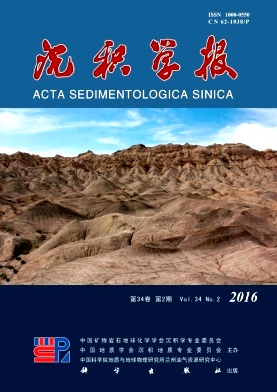The Recognition of Diagenetic Facies on the case from the Reservoir in He8 Section of Shihezi Formation, East Ⅱ Part of Sulige Gas Field, Qrdos Basin
doi: 10.14027/j.cnki.cjxb.2016.02.013
- Received Date: 2015-05-04
- Rev Recd Date: 2015-07-03
- Publish Date: 2016-04-10
-
Key words:
- diagenetic facies /
- diagenetic environment /
- He8 section /
- Sulige Gas Field /
- Ordos Basin
Abstract: Diagenetic facies is a popular method in the exploration of oil and gas, however, there were different research achievements because of the different definition. Based on the detailed research of petrology and diagenesis of reservoir in He8 section of Shihezi Formation, EastⅡpart of Sulige Gas Field, there were five kinds of diagenetic facies in He8 section of the study area, according to Zou(2008)'s classification and nomenclature of diagenetic facies. Combining with fluid inclusions analysis results, the diagenetic environments in He8 section of East Ⅱ part of Sulige Gas Field were analyzed, and restudied the diagenetic facies according to the diagenetic environments, which improved the forming process and stages of diagenetic facies. The reservoirs in He8 section were undergone three kinds of diagenetic environments:neutral to weak acid atmospheric diagenetic environment, weak acid to acid burial diagenetic environment and weak alkaline burial diagenetic environment, different diagenetic facies were produced in different diagenetic environments. Weak dissolution-compaction facies was formed due to the compaction and weak acid dissolution in the Syndiagenetic-Period A of Early diagenetic stage, with atmosphere and acidic burial environment. There was weak acidic buried environment of Period A-Period B of Early diagenetic stage, due to the enhancing compaction and dissolution, dissolution-compaction facies was formed. Cementation and acid dissolution were the main diagenesis of the Period A-early Period B of Middle diagenetic stage, so dissolution-cementation facies was formed in the stage. And metasomatic facies was dominated by the alkaline metasomatism and cementation in late Period B of Middle diagenetic-Epigenetic stage, so the metasomatic facies was mainly formed in the alkaline burial environment when the diagenetic evolution had been up to the Period B of Middle diagenetic stage. According to the definition that diagenetic facies is the material performance of diagenetic environment, "lithology+diagenetic environment+(physical characteristics)+main diagenesis" is as the basis to divide diagenetic facies. Following the classification scheme, five types of diagenetic facies are divided for the reservoirs in He8 section:Dense compaction facies of greywacke in atmosphere environment, Dissolution-compaction facies of arenite with extra low porosity and permeability in atmosphere and acidic burial environment, Dissolution-cementation facies of arenite with extra low porosity and permeability in acidic burial environment, Dissolution facies of arenite with low porosity and permeability in acidic burial environment, and last, Dense metasomatic facies of arenite in alkaline burial environment.
| Citation: | MOU ChuanLong, WANG XiuPing, WANG QiYu, WANG YuanChong. The Recognition of Diagenetic Facies on the case from the Reservoir in He8 Section of Shihezi Formation, East Ⅱ Part of Sulige Gas Field, Qrdos Basin[J]. Acta Sedimentologica Sinica, 2016, 34(2): 346-355. doi: 10.14027/j.cnki.cjxb.2016.02.013 |






 DownLoad:
DownLoad: